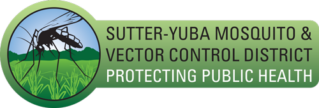Plague is a disease caused by infection with the bacteria, Yersinia pestis, which maintains its existence in a cycle involving rodents and their fleas. Many types of rodents such as ground squirrels, woodrats, prairie dogs, chipmunks, marmots, and mice are important hosts of plague. Fleas pick up the bacteria when they bite and feed on animals infected with plague. The infected fleas can then bite other animals and people, spreading the disease. Additional methods of transmission include handling of infected animals (live or dead) and airborne infection, particularly by a pet cat. An infected cat will often become very ill and can directly infect humans when they sneeze infectious droplets into the air (pneumonic plague). Dogs are less likely to become ill, but can still bring plague-infected fleas into homes.
Plague types
Symptoms of bubonic plague include sudden onset of fever, headache, chills, weakness and one or more swollen, tender and painful lymph nodes (called buboes). Without treatment, the bacteria can spread to other parts of the body. Septicemic (bloodstream) plague may cause added symptoms such as abdominal pain, shock and sometimes bleeding into the skin and other organs. These forms result from infected flea bites or from handling an infected animal. Pneumonic (lungs) plague also causes fever, headache and weakness and a rapidly developing pneumonia with shortness of breath, chest pain, cough and sometimes bloody or watery mucous. It develops from inhaling infectious airborne droplets or from bacteria reaching the lungs because of untreated bubonic or septicemic plague. Pneumonic plague is the most serious form of the disease, as it may cause respiratory failure and shock. This is the only form of the disease that can be spread from person to person. Plague is a serious illness and must be treated promptly by medical providers. Fortunately, modern antibiotics are effective treatments for plague, especially when applied early.
World History
Recorded history tells us that plague has appeared in at least three major epidemics worldwide. These occurred in the 6th, 14th and 19th centuries and killed vast numbers of people including about one third the population of Europe during the 14th century. The discovery of the plague transmission cycle and modern antibiotics ended the era of large plague pandemics. However, smaller numbers of human plague cases still occur in rural and urban settings around the world including the United States.
Plague in the U.S.
Plague was first introduced into the U.S. in 1900 in San Francisco by rat-infested steamships that had sailed from affected areas, mostly from Asia. Epidemics occurred in port cities including Los Angeles in 1908. Plague then spread from urban rats in port cities to rural rodent species and became enzootic in many areas of the western U.S. The last urban plague epidemic in the U.S. occurred in Los Angeles from 1924 to 1925 and plague has not been detected in urban areas of California since that time. Between 1900 and 1925 California recorded 375 human cases of plague. An additional 65 human cases have been recorded since 1927 bringing the total in California history to around 440 human cases. In current times, plague is present in certain species of rodents in the mountains and foothills of California. Plague has not been detected in the Central Valley.
Plague is kept in check in California
Surveillance and control measures are conducted in California by trained personnel from state or local health departments and vector control agencies. Many recreational and camping areas in the western U.S. are in areas where plague is occasionally detected. If plague is found, control measures are implemented to reduce or stop the spread of plague bacteria between rodents and fleas. Control is accomplished primarily by encouraging sanitation methods such as eliminating food sources, garbage, brush or trash piles and abandoned structures and treating for fleas in rodent burrows and dens. These activities are usually conducted only where people may come into contact with disease infested rodents and fleas.
What can I do?
When living in or visiting a plague endemic area, stored and fresh foods, dog food, livestock feed and even garbage must be kept in rodent proof containers or areas that eliminate access by rodents. In general, avoid and keep pets away from dead or sick rodents and animal burrows where fleas may be seeking a new host. Applying repellent containing the active ingredient D.E.E.T. to socks and pant cuffs, putting flea and tick collars on pets, staying on trails and out of grassy areas and taping pants to your shoes or boots will help reduce the risk of flea bites.
